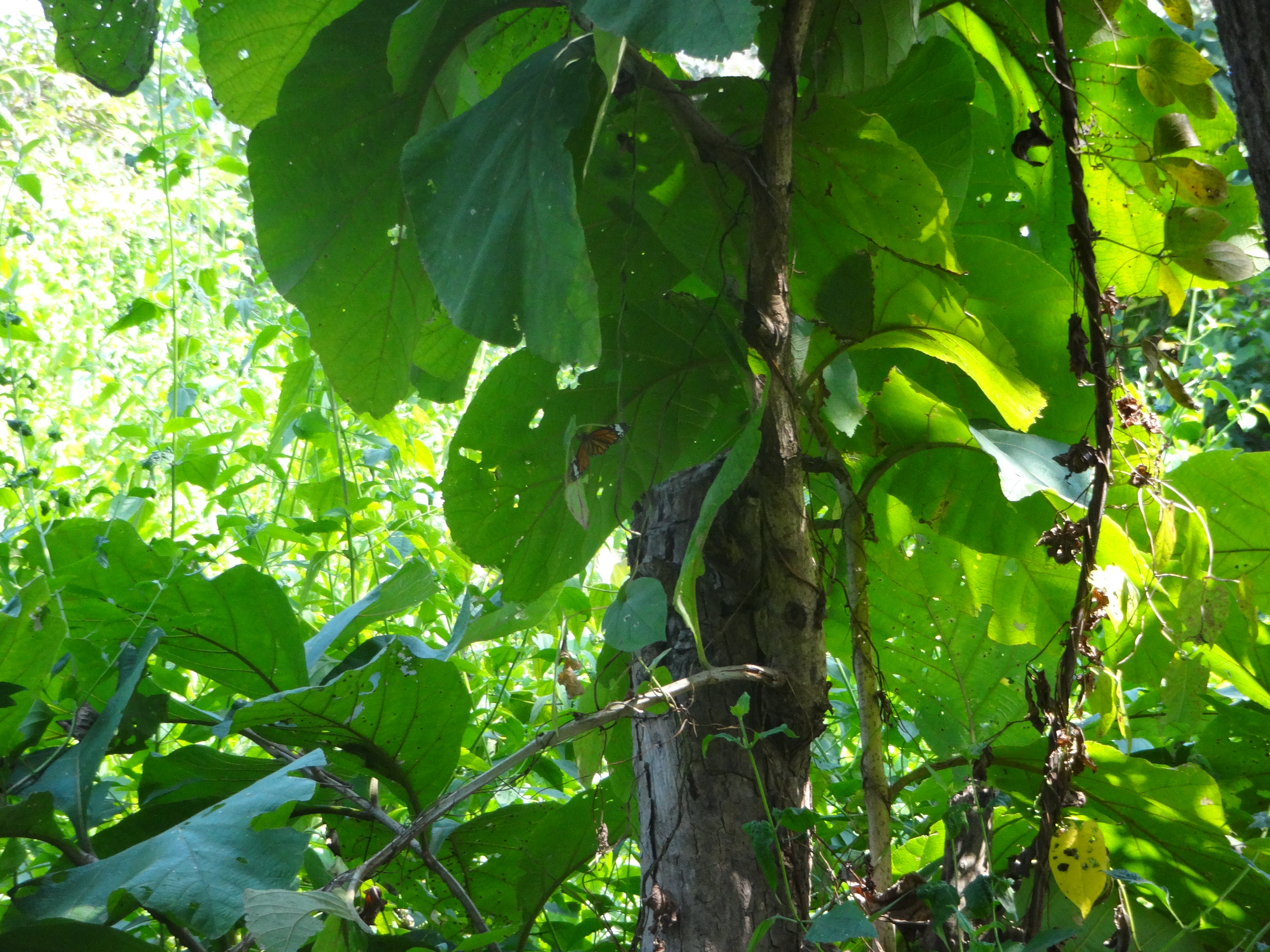
Green foliage
The first thing that one notices about Krishivan farm is its sense of tranquillity. The property has three warli painted huts and two wooden log houses as described in the previous blog post (Krishivan Agro Tourism – Part I).
Warli painting art, which is an ancient art befits this agro-tourism venture. With its origin in tribal art typically seen within the state of Maharashtra, warli painting is seen in rural parts of the state like Dahanu and similar villages.
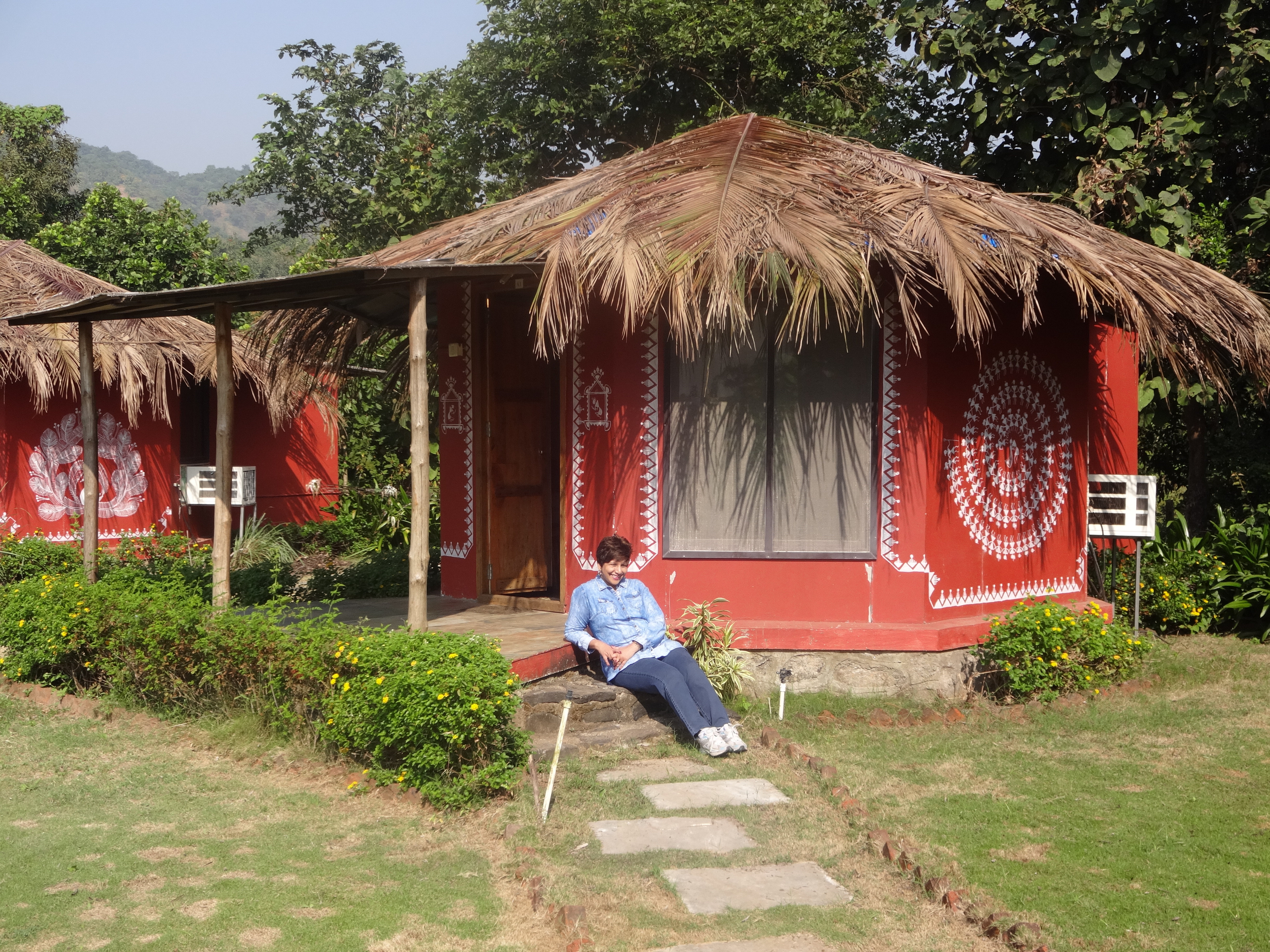
Perched on steps outside my own hut
In the picture above is my hut, my very own thatched hut for a day. Basking in the October sun’s full-orbed glory. Perched on low stone steps with nothing to do but laze in the natural sun rays and rustic beauty around.
The set of log houses is offered on double occupancy, for couples only, owing to its shortage of interior space. How convenient! The log houses stand pretty on this not-so-touristy property which once was a wasted land.
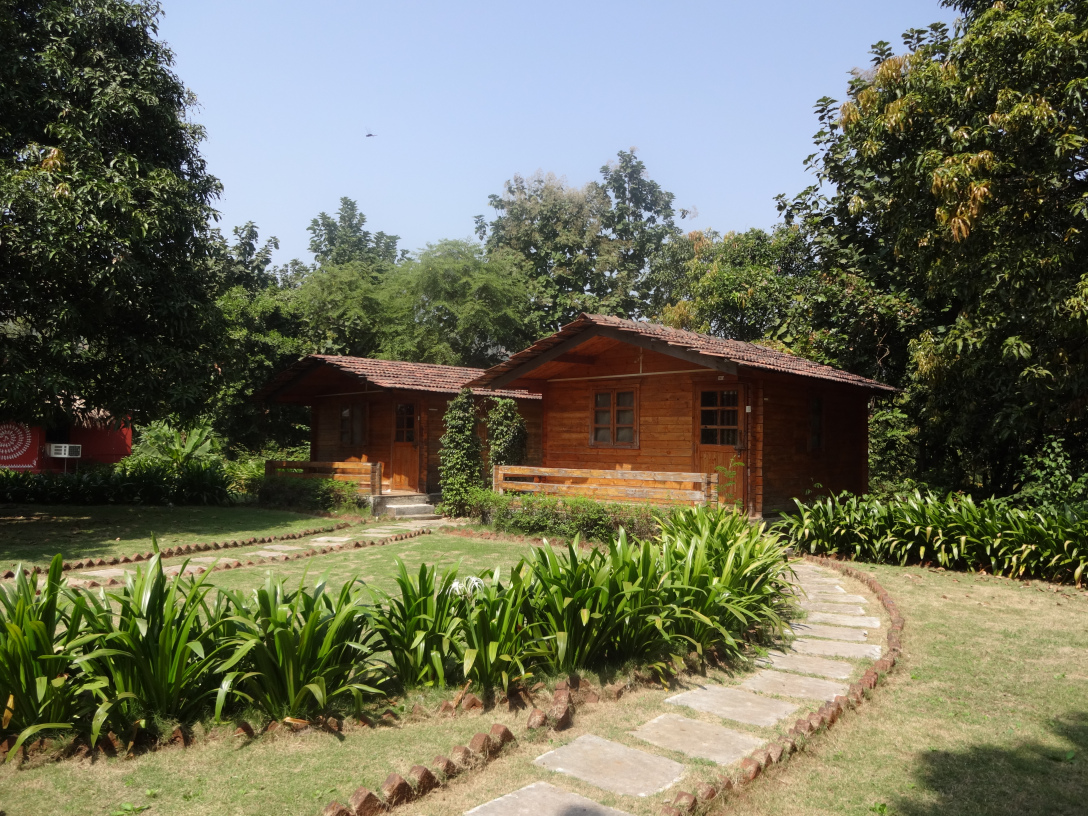
Log houses on double occupancy basis
This place certainly may not be everyone’s cuppa tea perhaps, but to me, it was an unravelling of a science story. I must admit that the benefits are minimal, but the experience is rustic and somewhat rural, hugged by fields, cattle, and so on. With no TV and minimum Wifi connectivity, there’s nothing to do in the real sense, but there’s a great deal of time to lounge around. Or chat, or swing. Or lie in a hammock, or sing. Believe it or not, there’s a guitar on the farm too!
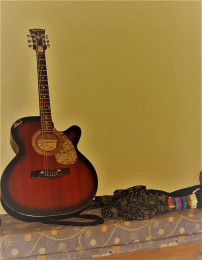
A guitar on the farm
There is a dish installed here; however, the network is poor. This problem was being worked upon then and could have been fixed by the time this blog was published.
Talking about chat, in one among my lazy chat sessions with him, Sachin recollected a conversation with his professor. Before starting the enterprise, he had voiced doubts about its success and wanted to procrastinate the project until after he had spent a few more years at his salaried job. Moreover, Sachin had one question uppermost in his mind. Who would want to marry a farmer!
“What are you waiting for?” asked the professor.
“To earn some money before investing in a farming venture”. replied Sachin.
“Tell me, Sachin, what is the ultimate reality of life?”
“Success and happiness” he ventured.
“That’s rubbish” reiterated the professor, “the ultimate reality of life is death. It could come knocking at your door in a month or a year or in a lifetime, who knows. If you aspire to do something, just go ahead and fulfil it. Upon weighing its pros and cons of course.”
There was no turning back after the significance of the professor’s words sunk in, and Krishivan thus came to be born. Sachin earned the full support of his family even though they, like him, were aware that farming wasn’t looked upon gloriously.
He considered promoting eco-tourism with a focus on attracting families with children and senior citizens. It was not to be an activity-based venture unless one looked upon harvesting, tractor rides, watching the milking of desi cows as activities. The primary focus was meant for the place to serve as nothing more than a quiet retreat, away from the milling crowd. Like a home away from home.
As soon as we arrived on the farm at 10 a.m. or thereabouts, we dropped our bags and made for the fields. While the access to the farm was smooth, the main road to Alibaug was a bit of a challenge as the road was badly potholed and could deter even the most ardent roadie.
October is the time when paddy is harvested at this farm as in other farms. So this is where we headed upon arrival. Even in the late hours of the morning, it was hot. A good thing then that I smeared capfuls of sunscreen wore large sunshades, a Stetson hat and full-length denim to steer off the scorching sun.

Ramp at the farm
A sickle with a saw-like blade is what allows for sharply cutting the grain crop in just one single strike. Many a labourer are engaged in the reaping process.
Don’t the workers get sunburnt?. Not if they turned their backs to the harshness of its glare. An ingenious idea!
The picture below captures the threshing process by a daily wages labourer. The process involves beating of sheaves of paddy on strategically placed stones to enable separate the paddy grains from the cut crop. Only skilled hands could apply the right amount of force and know the correct manner of twisting the wrist to create an impact to get all the grains separated – in two or three beatings. It is the potential energy, which is what coerces the grain off the stalks — a labour intensive job.

We walked on until we came by an old but useful implement to cut straw. A straw cutter it was into which bales of straw were fed to cut them into tiny bits. The product (that is, the chopped straw) serves as fodder for the cows bred on the farm. How remarkable that anything and everything is recycled on this farm and put to another use!
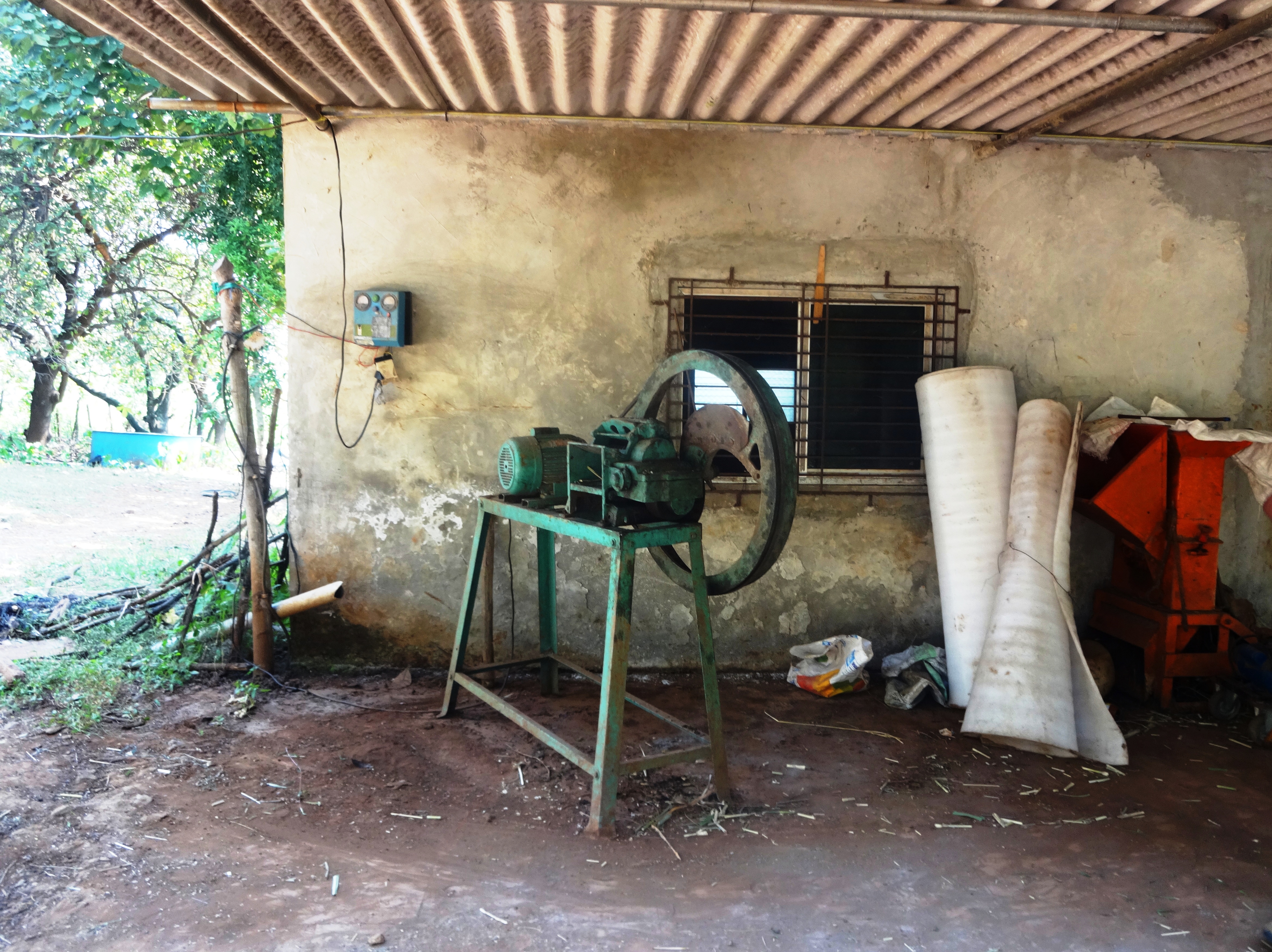
Straw cutter
We walked on some more, and next came by a pair of tractor wheels awaiting a coat of red oxide. This is a primer that shields ferrous metals from rust. Fortunately, there was yet another tractor on the farm with sturdy wheels on which I enjoyed a ride across the property.
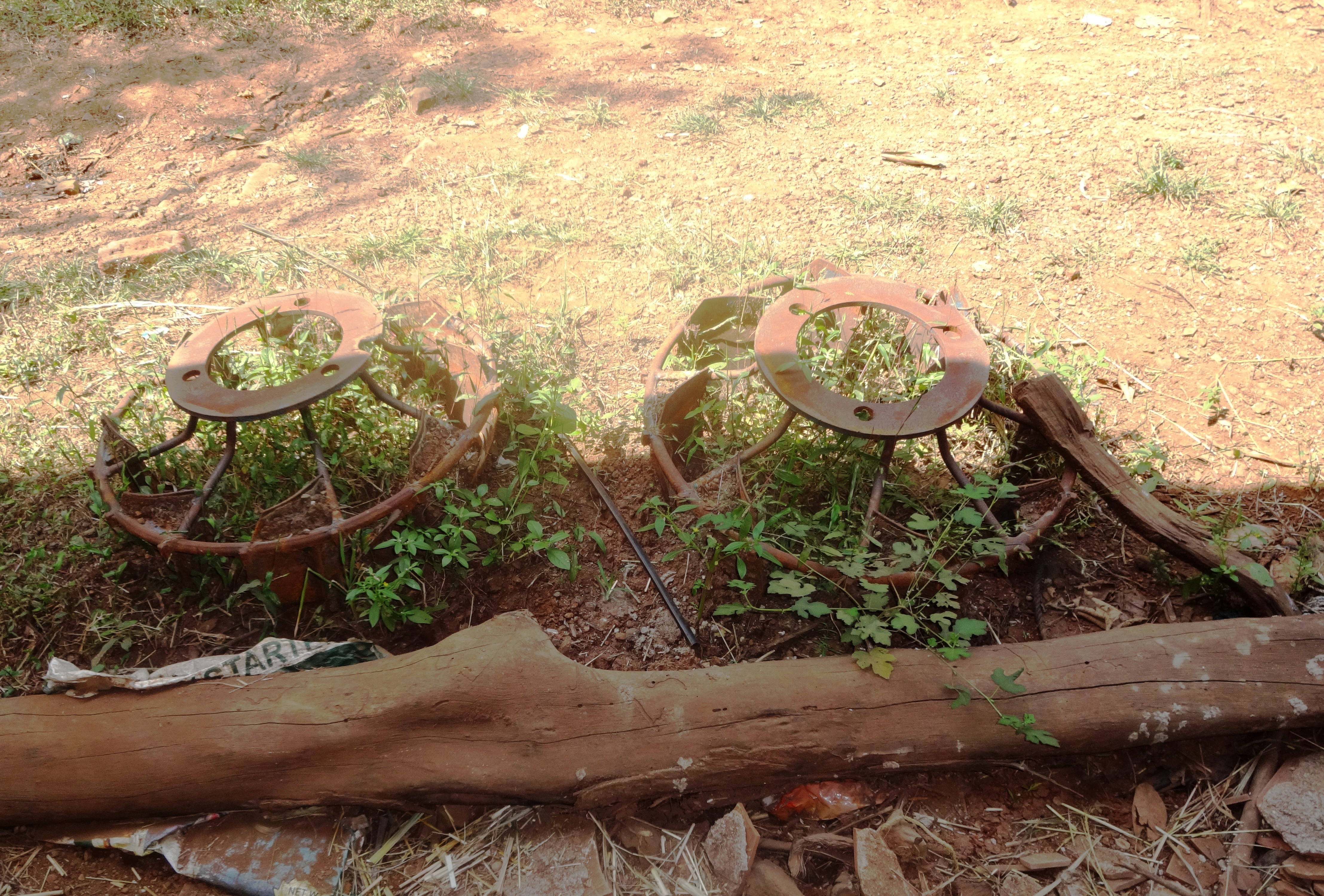
Old tractor wheels awaiting a coat of red oxide
A few miles into the farm we hailed Nandini, the desi cow on the farm. She peered discreetly at us from behind the bushes as we looked on. Her clan comprises Ganga and Yamuna and daughter, Radhika.
Nandini is left to graze in the fields simultaneously helping trim the grass. A two-fold benefit. Cow feeding and grass trimming. Its dung serves as manure, making it a three-fold benefit. Cow upkeep, grass maintenance and fertiliser generation at no added costs. Cost efficiency at its optimum!
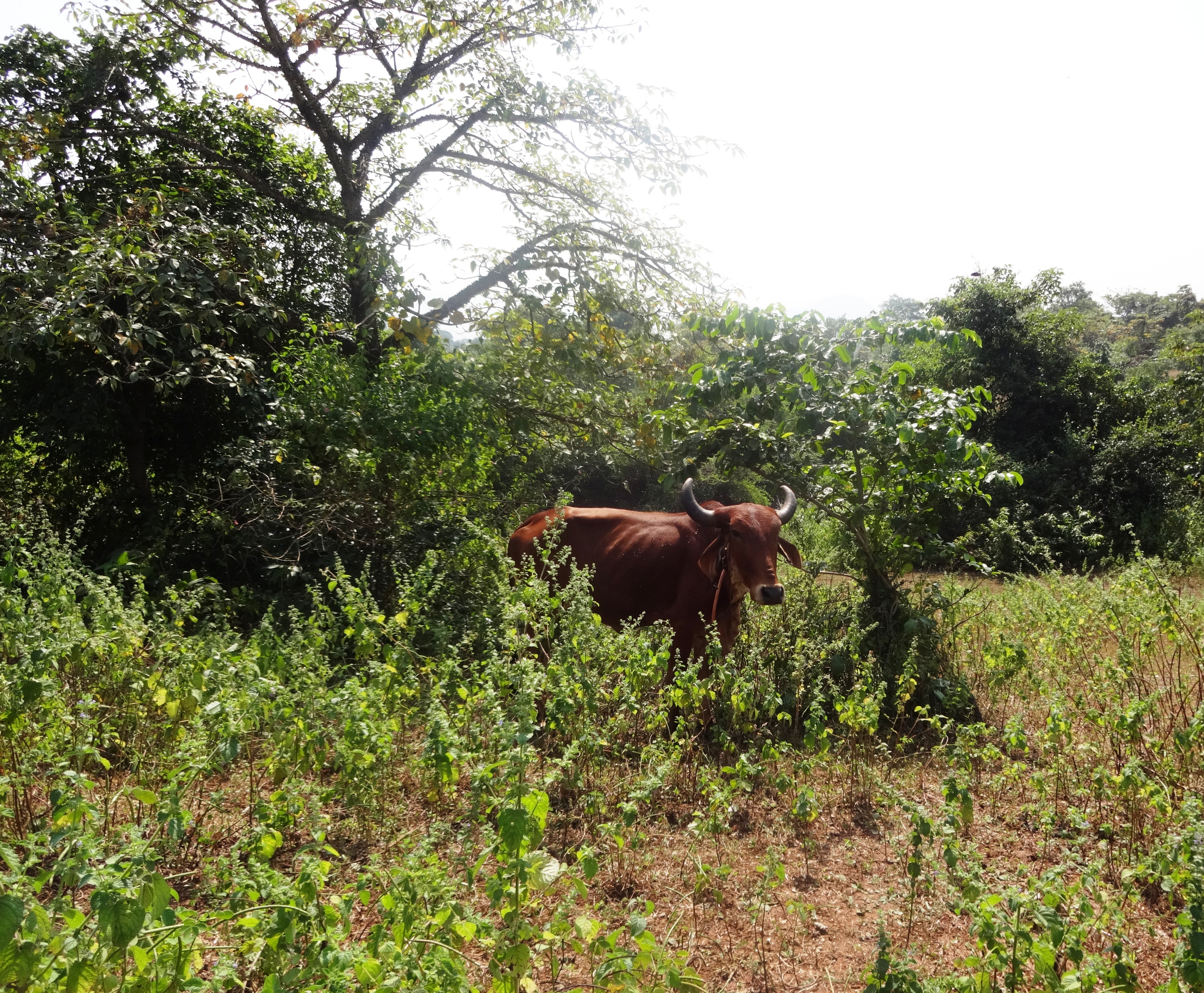
Nandini, the cow
The walk around the farm was enough to make us hungry as ever. This brought us to their open shed like dining area where a simple but satisfying lunch awaited us.
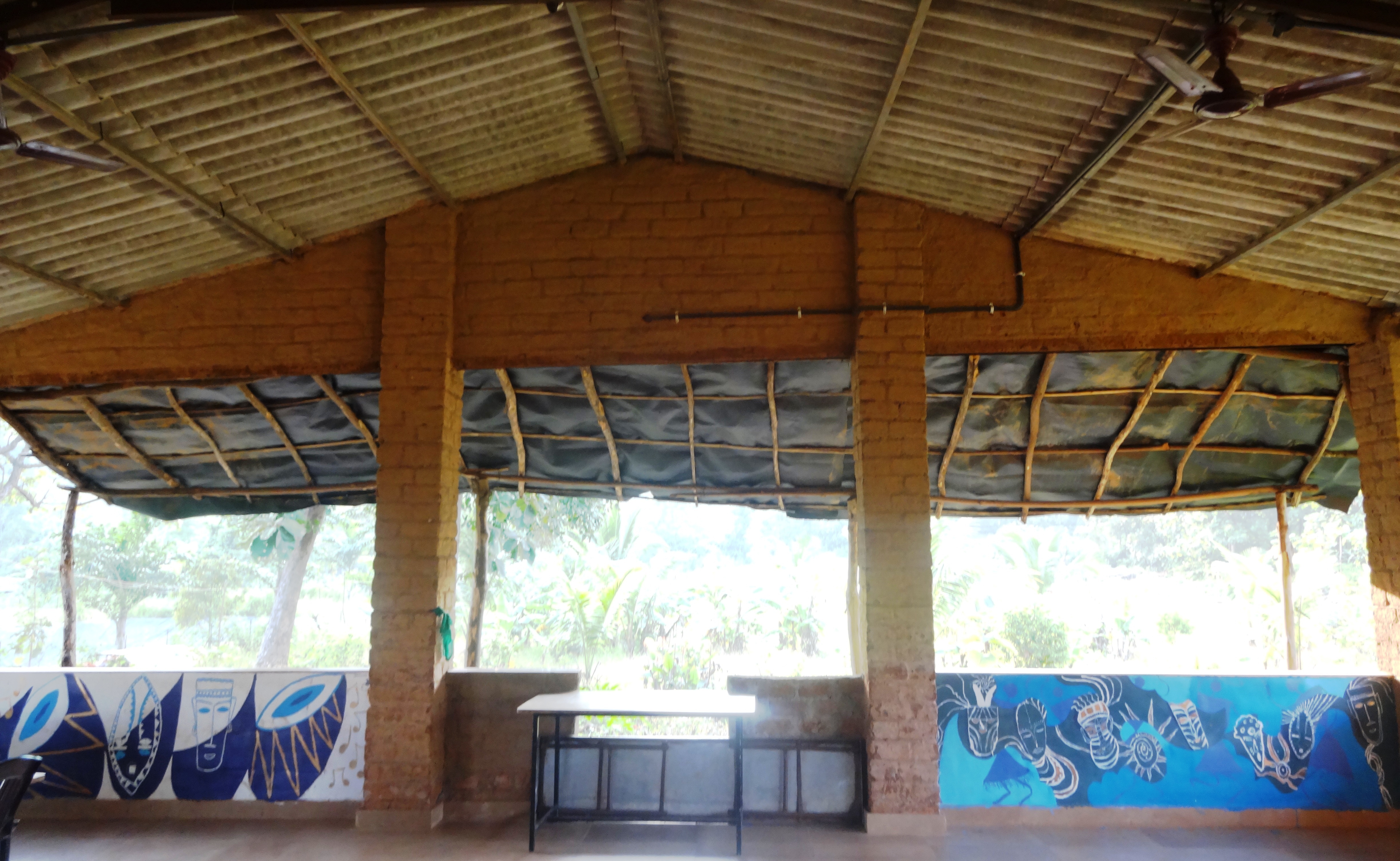
Semi-open dining area
As far as the food goes, it tastes close to home-made, typically Maharashtrian. The kitchen is run by a Kaka and a Kaki together with a few farmhands. The foodie that I am, I couldn’t resist peeping into the kitchen where a pot of rice boiled furiously on a large flame while an earthen vessel with curried fish simmered on another. The additional farm hand would fetch fish from the marketplace miles away from the farm. As the desi chickens were too small to go through a skewer, the larger ones were bought from the market, if there was to be a barbecue that is. Before you ask, yes the charcoal is home-made too!!

Prawn masala, fish fry, papad lunch
On the first day, we enjoyed a meal of piping hot steamed white rice, dosas, and red pomfret curry. The prawn masala was cooked the traditional way with lots of chopped onions, green chilli and farm-made garam masala. There was surmai fish fry to accompany, all marinated in home-made masala.
The green salad came from their farm-grown juicy cucumbers and blushing tomatoes together with home-made rice crisps.
A point to note here is that lunch and dinner have to be pre-ordered else it would leave you driving an insane distance to find a restaurant. Breakfast comes with the stay package, and it was a relief to find that sodas and soft drinks were available too – at an additional price of course. Consumption of beer/spirits is not encouraged, especially with large male-dominated groups.
With as much walking and information, we needed a much-needed nap. And so back we trudged to our hut only to return to an evening expedition. More about the evening at Krishivan will follow in the next blog post (Krishivan Agro Tourism – Part III).
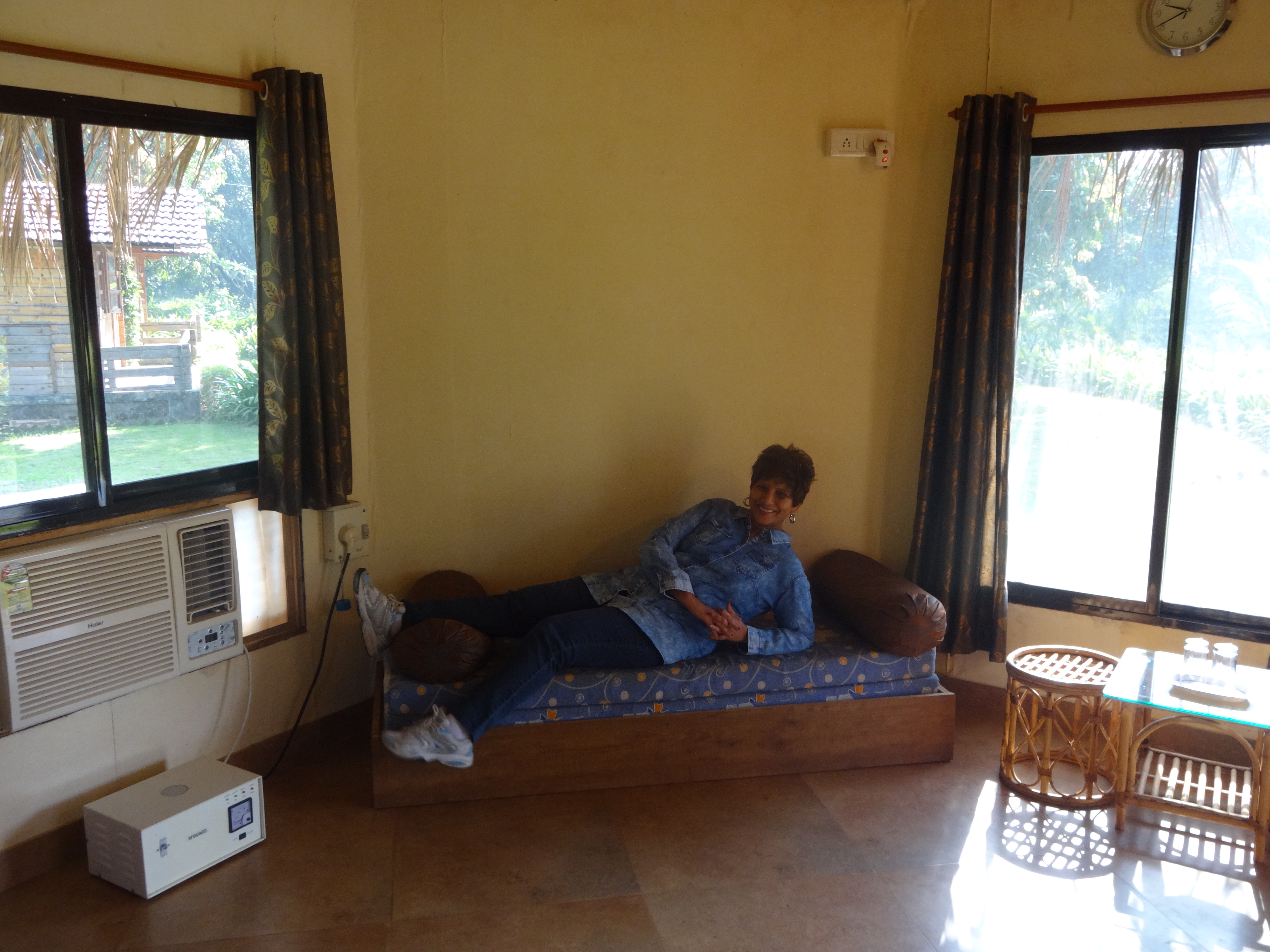
An extra mattress for the third occupant, if any
In the footer of this blog post is a link to the farm’s website which will tell you all that you need to know in terms of its features to allow me to dwell solely on its finer attributes. Watch this space for more, to follow in the next article.
Log on to www.krishivan.com to glance through its gallery, features and amenities.
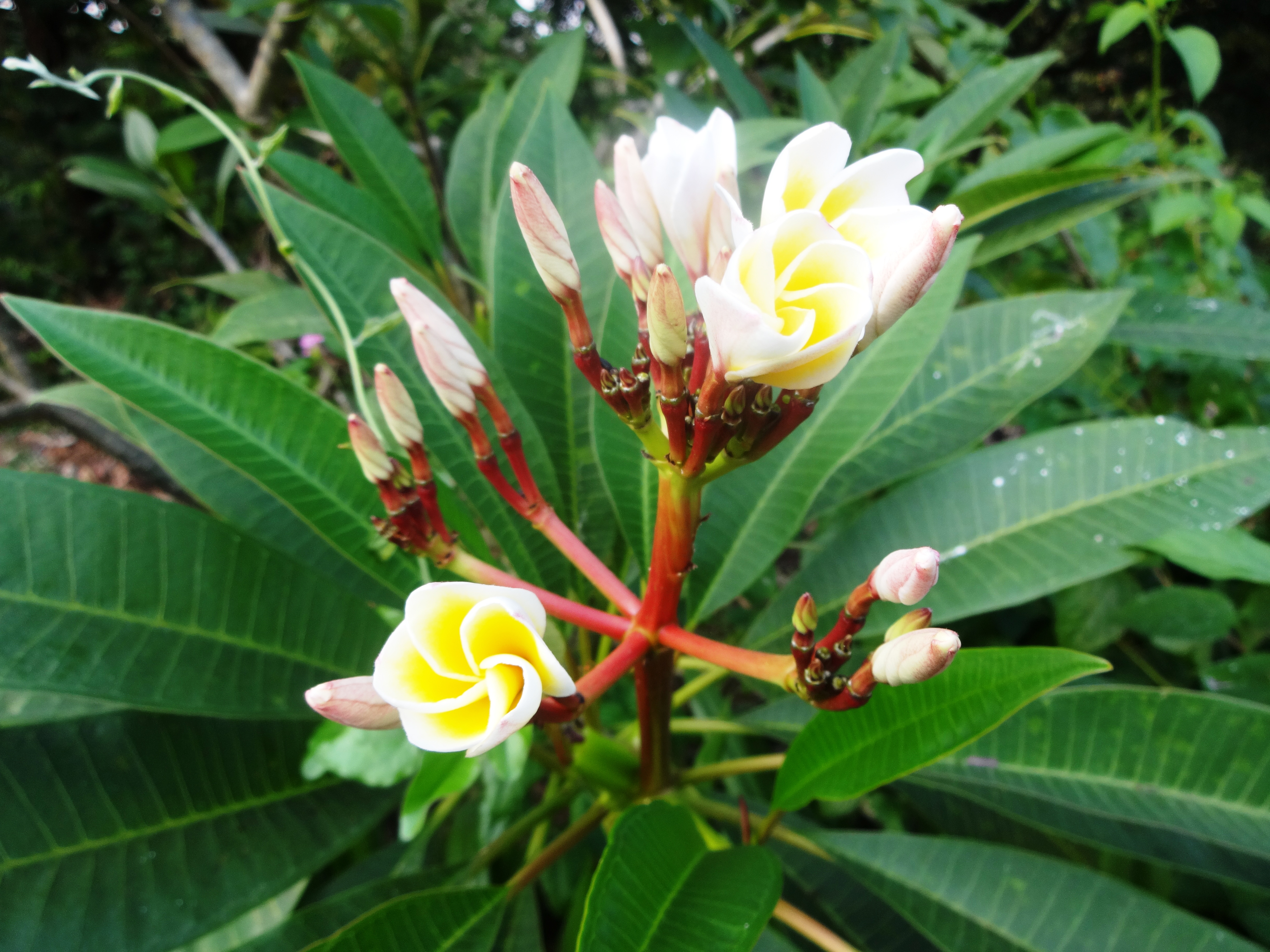
Wild flowering plants on the farm


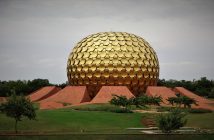
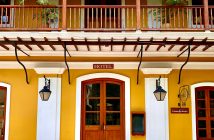
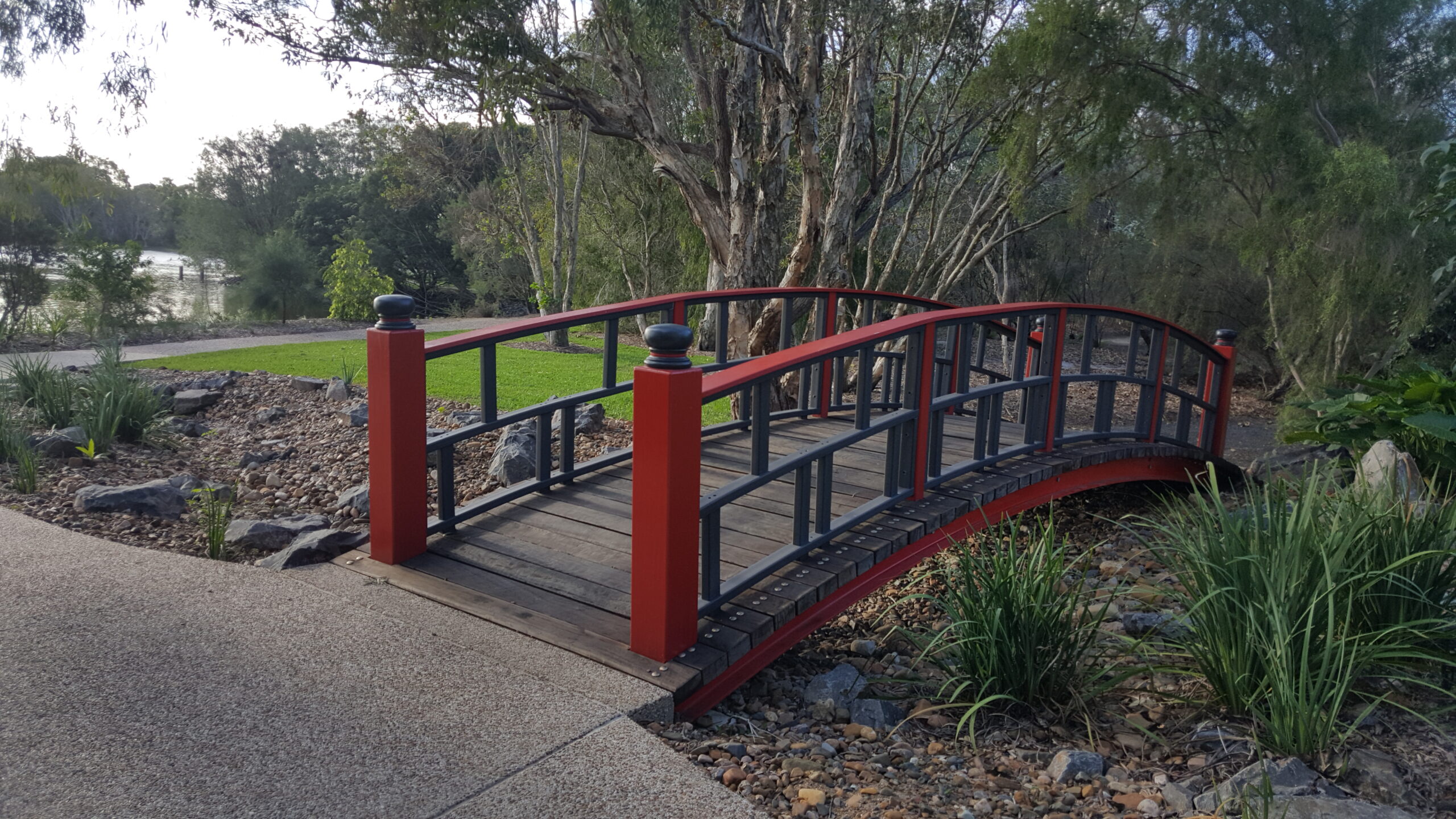
2 Comments
Quirky and traditional, set in shades of fresh green foliage.
Thank you, Maria, The place is more rustic than quirky.